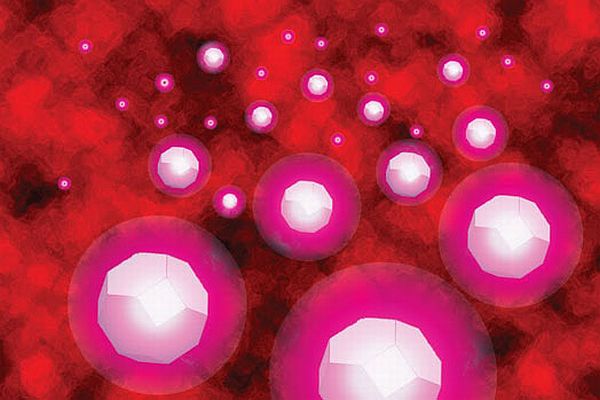Capturing ongoing processes within living cells in real time is usually done with fluorescent dyes made up of a fluorescent chemical compound, fluorophore. The compound’s unique property of re-emitting light upon excitation makes it the most deserving candidate for imaging cellular processes, however, with the passage of time, the compound becomes toxic thereby renders havoc to the cells in close proximity.
In an attempt to solve this problem, researchers at Cardiff University, Wales have created an innovative technique by taking ‘nanodiamonds’ into consideration. Conventionally, by artificially creating ‘defects’ in these nanodiamonds, the substance would illuminate hence, can overtake the toxic causing fluorophores. Nevertheless, this is not only time-consuming process but quite an expensive approach as well.
Fluorescence of nanodiamonds
Instead of tweaking the nanodiamonds, researchers at Cardiff employed a different idea. The approach removes the extra process of creating the defects within the compounds. They were able to achieve the fluorescence of nanodiamonds by interaction between the light that is used for illumination along with the quivering of the chemical bonds within its lattice arrangement. The resultant vibrations made the light disperse but with a different color.
This effect was achieved by beaming two laser lights pulsating at a particular frequency. The beams triggered the vibrations within the chemical bonds. One of the shafts of light was responsible for producing anti-Stokes Raman scattering (CARS) light, observed the scientists.
The new imaging modality
Experts then gauged the CARS light’s intensity, via electron microscope and customized optical contrast methods, on various nanodiamonds across sizes. As a consequent of which, the researchers were able to measure the number of nanodiamonds that have been introduced into the living cells.
As per one of the lead researchers, Paola Borri, the new imaging modality is a revolutionary step towards solving the complex cellular trafficking. It also opens up new vistas towards delivering localized drugs within the cells and in and cancer therapeutics.
Image: Northwestern University
Source: Cardiff University




